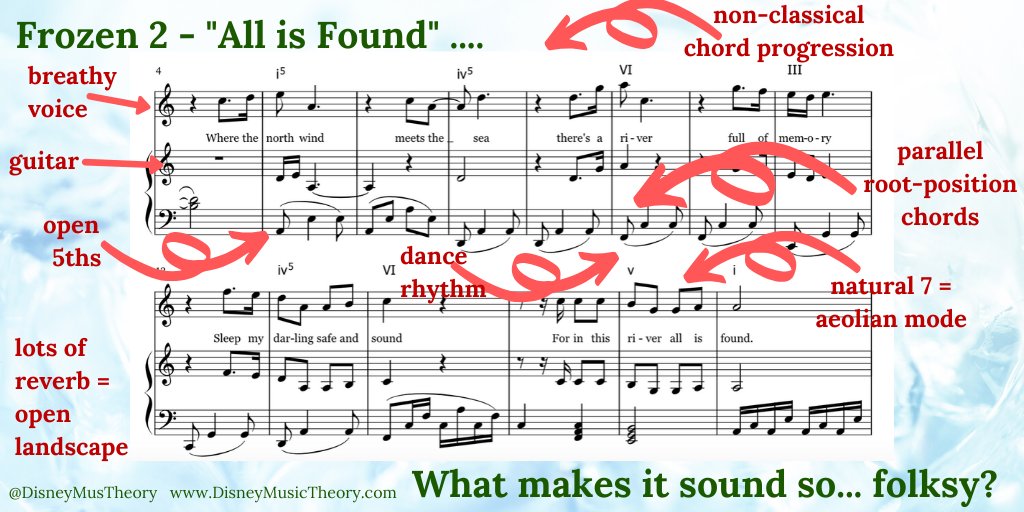It’s been WAY too long since I wrote a blog post.
Deep dive into “All is Found” from #Frozen2, here we go! https://abs.twimg.com/emoji/v2/... draggable="false" alt="💃🏻" title="Woman dancing (light skin tone)" aria-label="Emoji: Woman dancing (light skin tone)">
https://abs.twimg.com/emoji/v2/... draggable="false" alt="💃🏻" title="Woman dancing (light skin tone)" aria-label="Emoji: Woman dancing (light skin tone)">
Deep dive into “All is Found” from #Frozen2, here we go!
Before analyzing ANY of the music from Frozen 2, you have to know what "spread chords" are.
They& #39;re commonly used in film scores to widen the orchestral texture.
Rather than having the mediant between the tonic and dominant, you put it above the dominant. Spread out the notes.
They& #39;re commonly used in film scores to widen the orchestral texture.
Rather than having the mediant between the tonic and dominant, you put it above the dominant. Spread out the notes.
You also need to know what "sus chords" are.
"Sus" is short for "suspension," a term conservatory students might know from studying Bach and Corelli.
But in classical music theory, suspensions have to be prepared in advanced.
In jazz/rock/Frozen, they can just appear suddenly.
"Sus" is short for "suspension," a term conservatory students might know from studying Bach and Corelli.
But in classical music theory, suspensions have to be prepared in advanced.
In jazz/rock/Frozen, they can just appear suddenly.
In a "sus chord," the suspended note is actually a part of the chord itself.
This is different from classical music theory, where a suspended note is carried over from a previous chord, and then resolves to a note of the following chord.
But here, it& #39;s a chord tone.
This is different from classical music theory, where a suspended note is carried over from a previous chord, and then resolves to a note of the following chord.
But here, it& #39;s a chord tone.
I& #39;m going to bed now, but I& #39;m *so* excited to dive deeply into "All is Found" from #Frozen2 with y& #39;all.
Just wanted to make sure you understood some of the basic theory first, which isn& #39;t typically included in college music theory textbooks.
G& #39;night!
Just wanted to make sure you understood some of the basic theory first, which isn& #39;t typically included in college music theory textbooks.
G& #39;night!
~~~~~~~~~~~~~~~~~~~~~~~~~~
OK, friends! Let& #39;s talk about the first three measures of "All is Found" from #Frozen2!
Obviously, mm. 1-2 are the intro and m. 3 is where the first verse starts, right? RIGHT??
And yes, that& #39;s true.
BUT.
See how the formal boundary is blurred?
Obviously, mm. 1-2 are the intro and m. 3 is where the first verse starts, right? RIGHT??
And yes, that& #39;s true.
BUT.
See how the formal boundary is blurred?
There& #39;s a scale from 1 to 5, but we don& #39;t reach 5 until measure 3, and then it resolves back down to 1.
In other words: the opening gesture (scale from tonic to dominant + cadence) actually extends into measure 3.
So where does the intro end and the verse begin? They overlap!
In other words: the opening gesture (scale from tonic to dominant + cadence) actually extends into measure 3.
So where does the intro end and the verse begin? They overlap!
But wait, there& #39;s more!
All three measures have the same basic chord -- a tonic A minor triad (in spread form).
In other words: there& #39;s no chordal cadence, or really any chord progression at all, to suggest a formal division between intro and verse.
It all blends together.
All three measures have the same basic chord -- a tonic A minor triad (in spread form).
In other words: there& #39;s no chordal cadence, or really any chord progression at all, to suggest a formal division between intro and verse.
It all blends together.
Ok, ok, ok.
So the intro and verse overlap. Big whoop. No big deal.
But wait.... is the intro actually an intro, or is it actually the beginning of the verse, starting straight away on measure 1?
So the intro and verse overlap. Big whoop. No big deal.
But wait.... is the intro actually an intro, or is it actually the beginning of the verse, starting straight away on measure 1?
Take a closer look at the way the scale is decorated.
It& #39;s not just 1 - 2 - 3 - 4 - 5 BOOM DONE.
See how the melody in mm. 1-2 is broken up into small 2-note gestures – 32nd + dotted 8th – separated by rests?
2-3... (rest)... 3-4... (rest)... [3]-4-5...?
It& #39;s not just 1 - 2 - 3 - 4 - 5 BOOM DONE.
See how the melody in mm. 1-2 is broken up into small 2-note gestures – 32nd + dotted 8th – separated by rests?
2-3... (rest)... 3-4... (rest)... [3]-4-5...?
And what happens when the melody reaches the top of the scale, 3-4-5?
The voice comes in on those exact same notes, with almost the exact same rhythmic pattern that had been established earlier:
[3] - 16th note on 4, eighth note on 5.
(The extra 3 just adds to the momentum.)
The voice comes in on those exact same notes, with almost the exact same rhythmic pattern that had been established earlier:
[3] - 16th note on 4, eighth note on 5.
(The extra 3 just adds to the momentum.)
As it turns out, there& #39;s a motif stringing through this entire song.
A motif that shapes every melody and transition.
That motif is 3-4-5.
It& #39;s the first three notes of the singer& #39;s melody... but also, on a deep level, the accompaniment& #39;s introduction.
A motif that shapes every melody and transition.
That motif is 3-4-5.
It& #39;s the first three notes of the singer& #39;s melody... but also, on a deep level, the accompaniment& #39;s introduction.
In other words:
On a deep level...
... the accompaniment& #39;s intro (mm. 1, 2, and start of 3) IS THE SAME AS the singer& #39;s first few notes...
... AND BOTH are the same as the primary melodic motif that produces and binds together THE ENTIRE SONG.
Cooooooool. https://abs.twimg.com/emoji/v2/... draggable="false" alt="🤓" title="Nerd face" aria-label="Emoji: Nerd face">
https://abs.twimg.com/emoji/v2/... draggable="false" alt="🤓" title="Nerd face" aria-label="Emoji: Nerd face">
On a deep level...
... the accompaniment& #39;s intro (mm. 1, 2, and start of 3) IS THE SAME AS the singer& #39;s first few notes...
... AND BOTH are the same as the primary melodic motif that produces and binds together THE ENTIRE SONG.
Cooooooool.
Time to get my kid ready for school (via Zoom).
More later!
 https://abs.twimg.com/emoji/v2/... draggable="false" alt="❤️" title="Red heart" aria-label="Emoji: Red heart">
https://abs.twimg.com/emoji/v2/... draggable="false" alt="❤️" title="Red heart" aria-label="Emoji: Red heart">
More later!

 Read on Twitter
Read on Twitter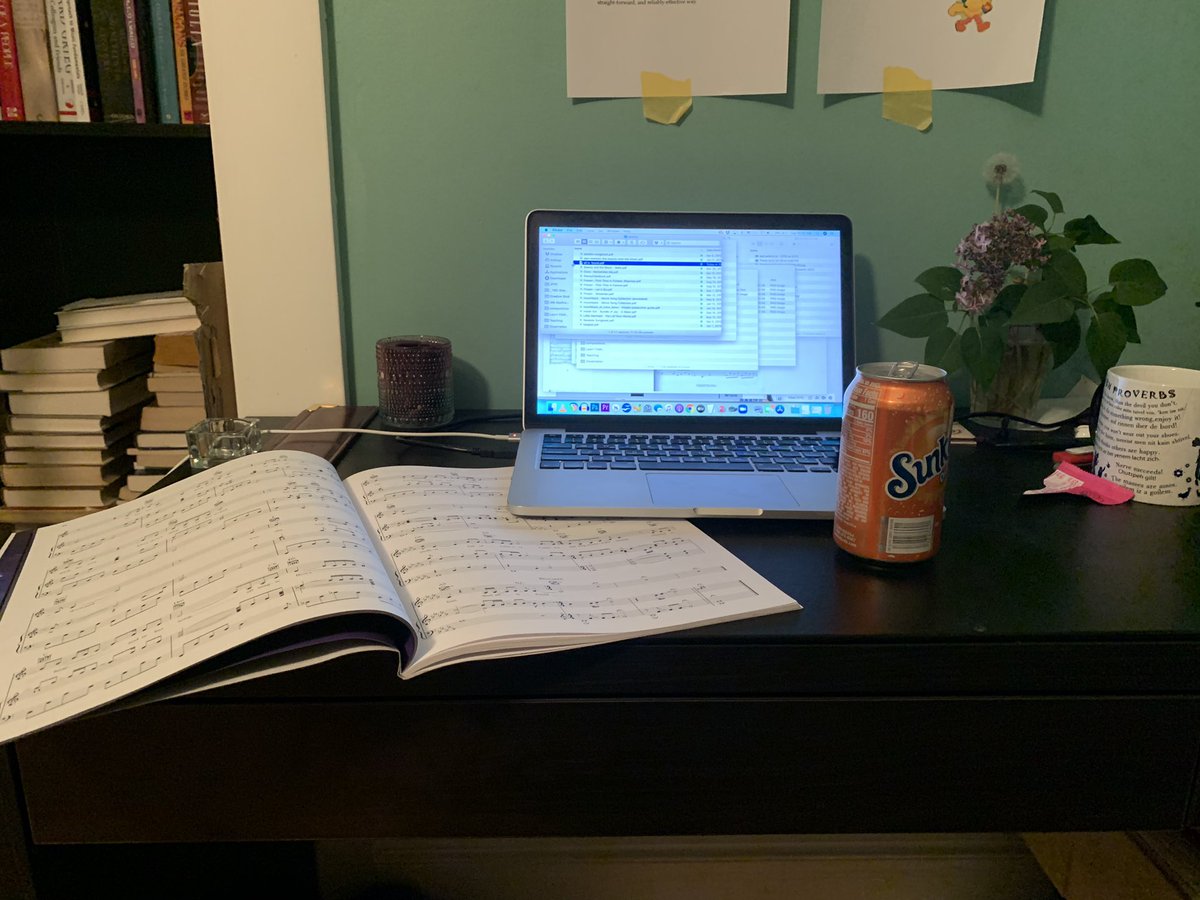 " title="It’s been WAY too long since I wrote a blog post.Deep dive into “All is Found” from #Frozen2, here we go! https://abs.twimg.com/emoji/v2/... draggable="false" alt="💃🏻" title="Woman dancing (light skin tone)" aria-label="Emoji: Woman dancing (light skin tone)">" class="img-responsive" style="max-width:100%;"/>
" title="It’s been WAY too long since I wrote a blog post.Deep dive into “All is Found” from #Frozen2, here we go! https://abs.twimg.com/emoji/v2/... draggable="false" alt="💃🏻" title="Woman dancing (light skin tone)" aria-label="Emoji: Woman dancing (light skin tone)">" class="img-responsive" style="max-width:100%;"/>
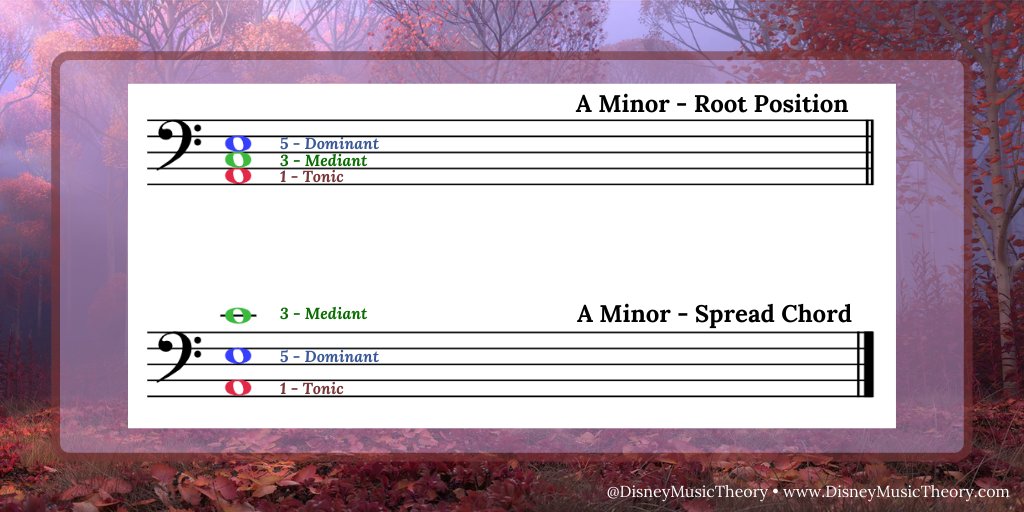
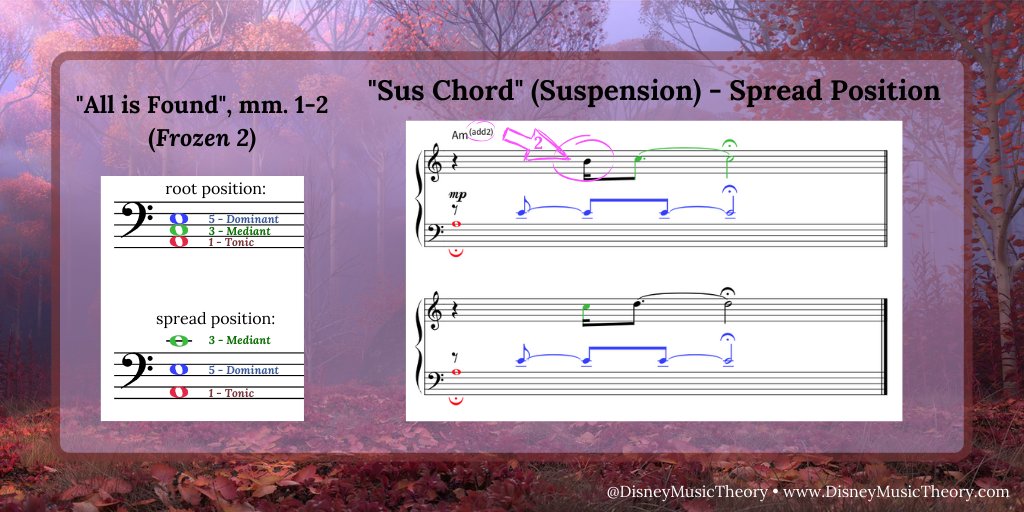


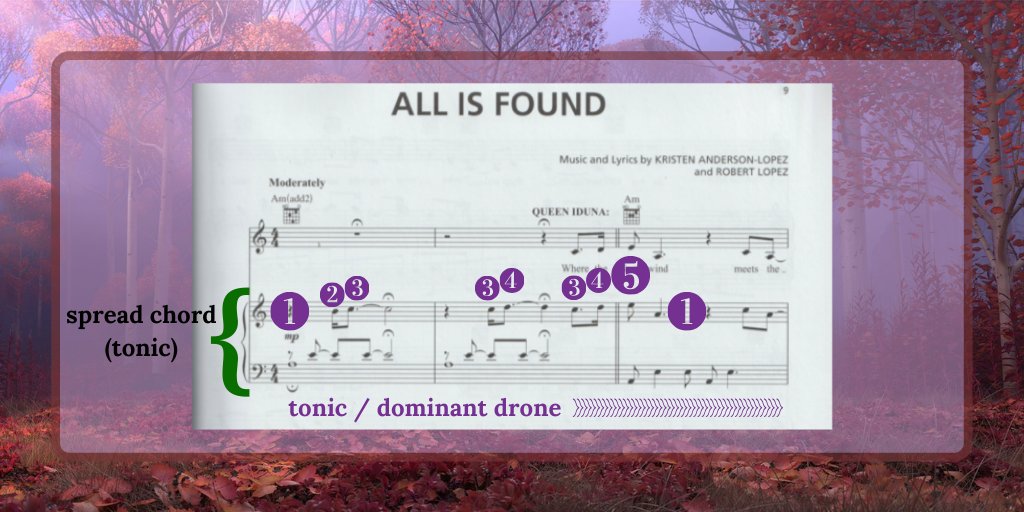
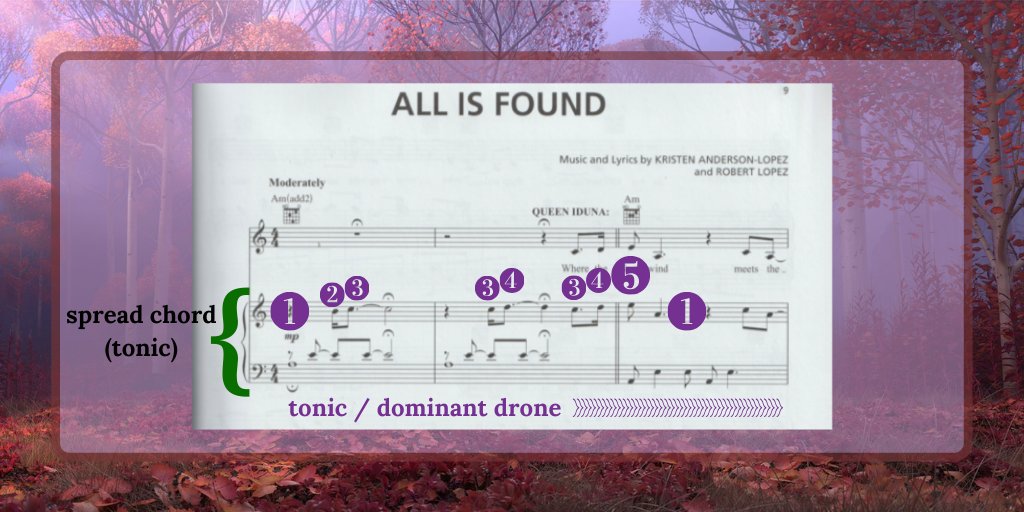
![Take a closer look at the way the scale is decorated.It& #39;s not just 1 - 2 - 3 - 4 - 5 BOOM DONE.See how the melody in mm. 1-2 is broken up into small 2-note gestures – 32nd + dotted 8th – separated by rests?2-3... (rest)... 3-4... (rest)... [3]-4-5...? Take a closer look at the way the scale is decorated.It& #39;s not just 1 - 2 - 3 - 4 - 5 BOOM DONE.See how the melody in mm. 1-2 is broken up into small 2-note gestures – 32nd + dotted 8th – separated by rests?2-3... (rest)... 3-4... (rest)... [3]-4-5...?](https://pbs.twimg.com/media/EYdPXx_WoAIEclo.jpg)
![And what happens when the melody reaches the top of the scale, 3-4-5?The voice comes in on those exact same notes, with almost the exact same rhythmic pattern that had been established earlier:[3] - 16th note on 4, eighth note on 5.(The extra 3 just adds to the momentum.) And what happens when the melody reaches the top of the scale, 3-4-5?The voice comes in on those exact same notes, with almost the exact same rhythmic pattern that had been established earlier:[3] - 16th note on 4, eighth note on 5.(The extra 3 just adds to the momentum.)](https://pbs.twimg.com/media/EYdQqPdWoAA_UuD.jpg)
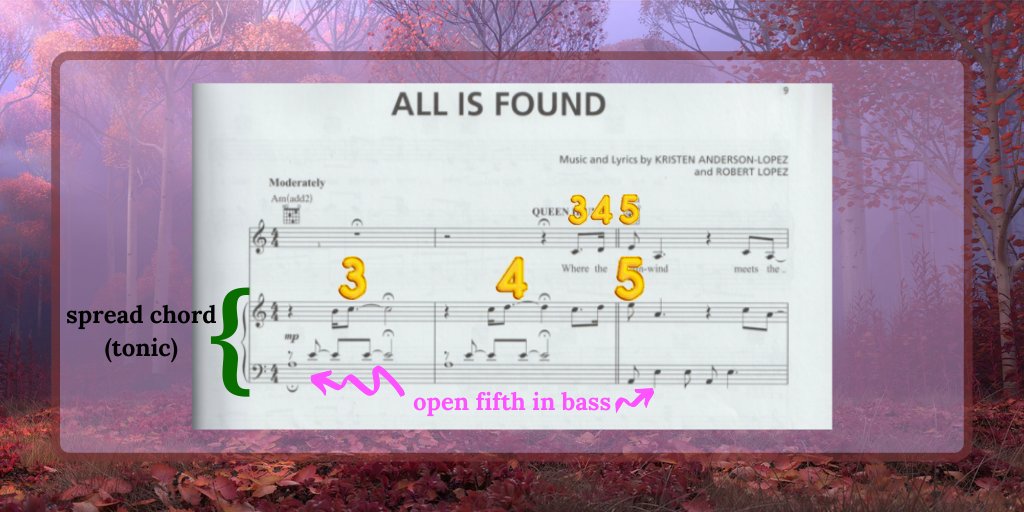
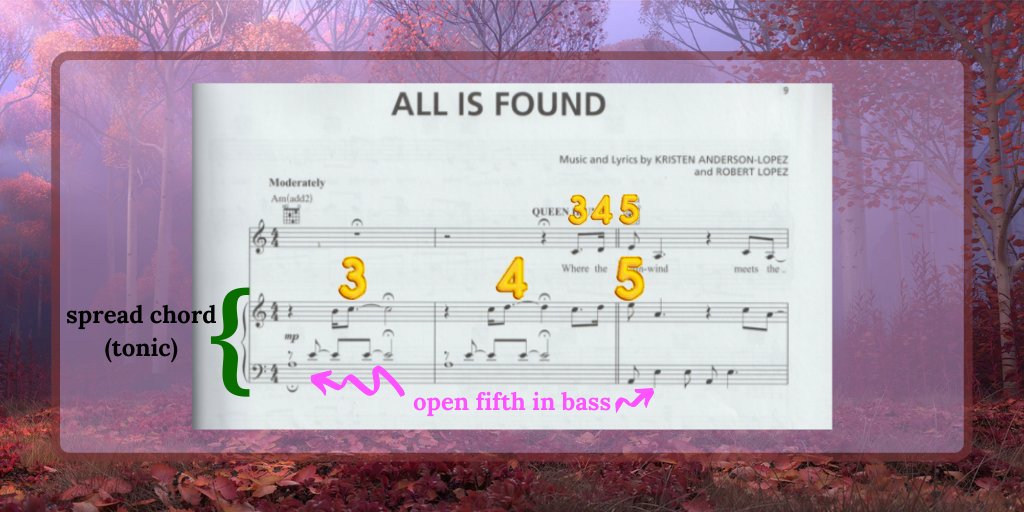 " title="In other words:On a deep level...... the accompaniment& #39;s intro (mm. 1, 2, and start of 3) IS THE SAME AS the singer& #39;s first few notes...... AND BOTH are the same as the primary melodic motif that produces and binds together THE ENTIRE SONG.Cooooooool. https://abs.twimg.com/emoji/v2/... draggable="false" alt="🤓" title="Nerd face" aria-label="Emoji: Nerd face">" class="img-responsive" style="max-width:100%;"/>
" title="In other words:On a deep level...... the accompaniment& #39;s intro (mm. 1, 2, and start of 3) IS THE SAME AS the singer& #39;s first few notes...... AND BOTH are the same as the primary melodic motif that produces and binds together THE ENTIRE SONG.Cooooooool. https://abs.twimg.com/emoji/v2/... draggable="false" alt="🤓" title="Nerd face" aria-label="Emoji: Nerd face">" class="img-responsive" style="max-width:100%;"/>
